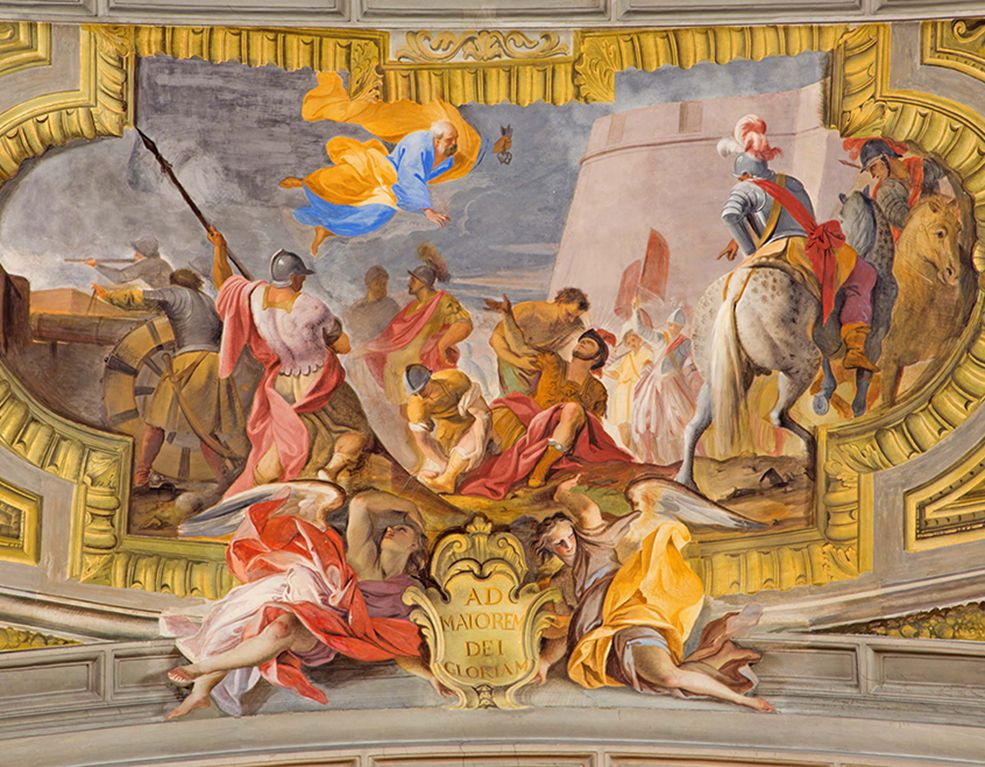What is presented as a point of arrival of the Spiritual Exercises is already present on the very first page of the book: it is in the traditional, devotional prayer of Anima Christi which Saint Ignatius puts at the beginning of his book. In that prayer, the soul desires to assume the sentiments of Christ and his love to the point of sacrifice. It is an identification with Jesus our ideal.
For Jesus’ greater glory, we struggle and give ourselves always more to people for the love of him. This yearning is included in the only prayer the Saint composed and remains as his summing up of the whole one full month of retreat: Suscipe: “Take, Lord, and receive”. It is Ignatius’ concluding prayer.
The Suscipe is not found in any of the four weeks of the Spiritual Exercises. Rather, it was included by Ignatius as additional material with the “contemplation for attaining love” at the end of the Exercises. In this section, Ignatius speaks of the immeasurable love of God that is bestowed upon all of creation and then asks that he might offer himself to such a loving God.
The Blessed Humanity Of Jesus
The object of the Spiritual Exercises of Saint Ignatius to be attained by means of an imaginative and affectionate contemplation is the life, passion, death, and resurrection of our Lord Jesus Christ: The Christian Mystery. That is what makes the Spiritual Exercises so central and effective: it is the contemplation of the Incarnation, of the Blessed Humanity of Jesus.
The heart of the Spiritual Exercises is the love for the Blessed Humanity of Christ. Jesus is the Great King who calls us to service for the salvation of sinners. For his greater glory, we struggle and give ourselves always more for the love of him.
The only prayer that Ignatius composed is an act of surrendering of self: freedom, mind, will, and everything in the awareness that all we have is a gift of God. What we ask is only God’s love and His grace. In this, the soul finds its fulfillment and satisfaction and that is enough and more than enough.
Jesus is the bridegroom of the soul. This is why throughout the history of Christian spirituality the Saints have focused their attention on the Blessed Humanity of Jesus. In the Bible, the Risen Christ teaches the Apostles to understand Him as the hinge keeping together the two Testaments, the hub or center of the Holy Scriptures. The preaching and mission come as a result of the experience of Jesus. This experience is meant to become our experience under the grace of the Holy Spirit.
Peter And Paul
The most wonderful example in the Gospels is that of the encounter/relationship of Jesus with Peter. Another beautiful example in the New Testament is that of Saint Paul. He did not know Jesus during His time on earth, but he was changed and transformed by his encounter with the Risen Christ on the way to Damascus, in the grace of the Holy Spirit.
So Jesus’ story and mystery became his story and the depth of his personality: “I have been crucified with Christ; it is no longer I who live, but Christ who lives in me; and the life I now live in the flesh I live by faith in the Son of God, who loved me and gave himself for me” (Galatians 2:20; Philippians 3:7-16).
The deep consciousness of Jesus as Savior/Mediator out of love is transmitted to the Apostles by the sign of the washing of the feet (John 13:1-17). The deepest statement of the need of this personal encounter with Jesus as a point of arrival has its perfect expression in the sentence: “Abide with me/make your home in me” (John 15:4).
The Sacred Heart Of Jesus
Throughout the centuries, this is the witness of the Saints: The Blessed Humanity of Jesus is the place where God meets with Humanity; the sacrament of our salvation; and the model of our perfection. Therefore, it should be the object of our love and contemplation. The last expression of it is the image of the Divine Mercy that we find nowadays in almost all our churches. I like the beautiful figure of Jesus in his appealing humanity and the red and white rays that come from his chest.
“The Bridegroom’s chest gives joy to her spouse,” Saint Bernard tells us. The chest/bosom/heart signifies love and tenderness. The theme of the open side of the Crucified was introduced into this context. With his lance, the soldier opened the ineffable riches of glory and revealed the heart, the cleft in the rock where humanity finds its refuge. For the mystical writer, Saint Gertrude the Great, the transfixed Heart is the Ark of the Godhead, the place where the divine treasures are kept, and by that very fact, the place where we experience the secrets of God.
To this very heart of Jesus, Saint Ignatius takes us with his Spiritual Exercises and with his whole spiritual approach and nothing will please him more than to see that we find in it our permanent abode.























